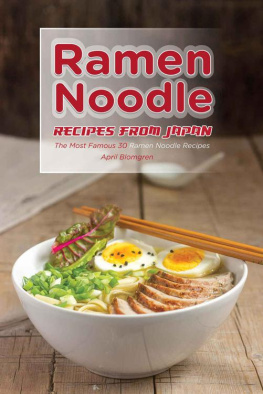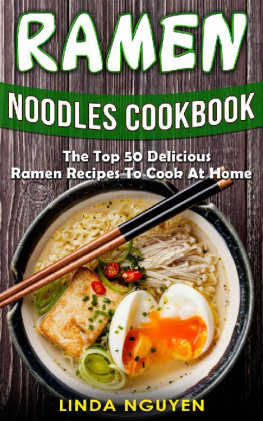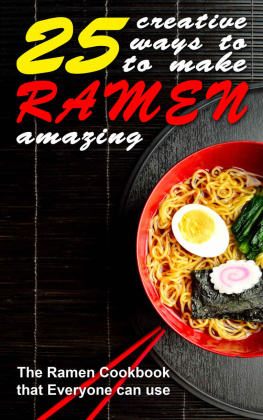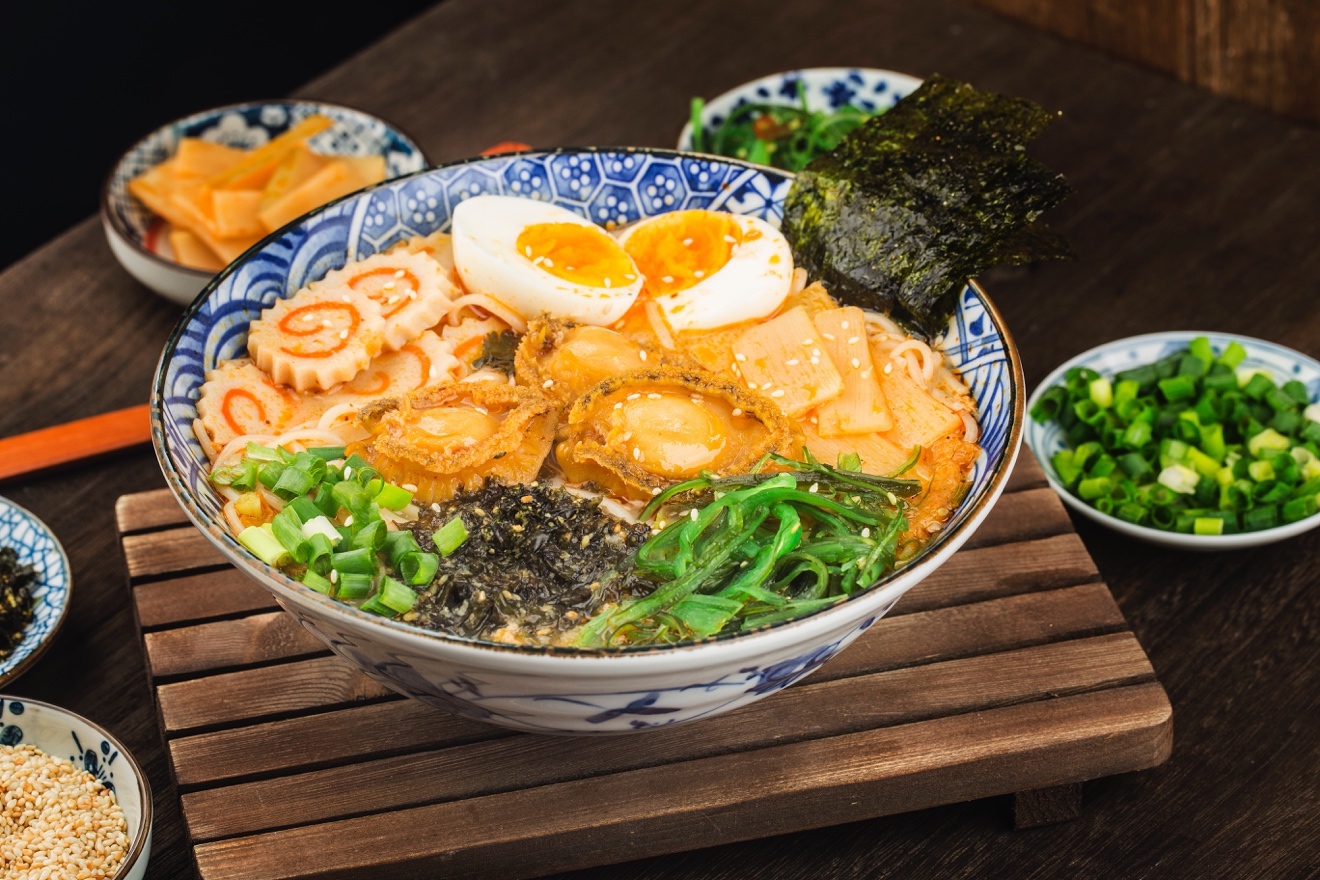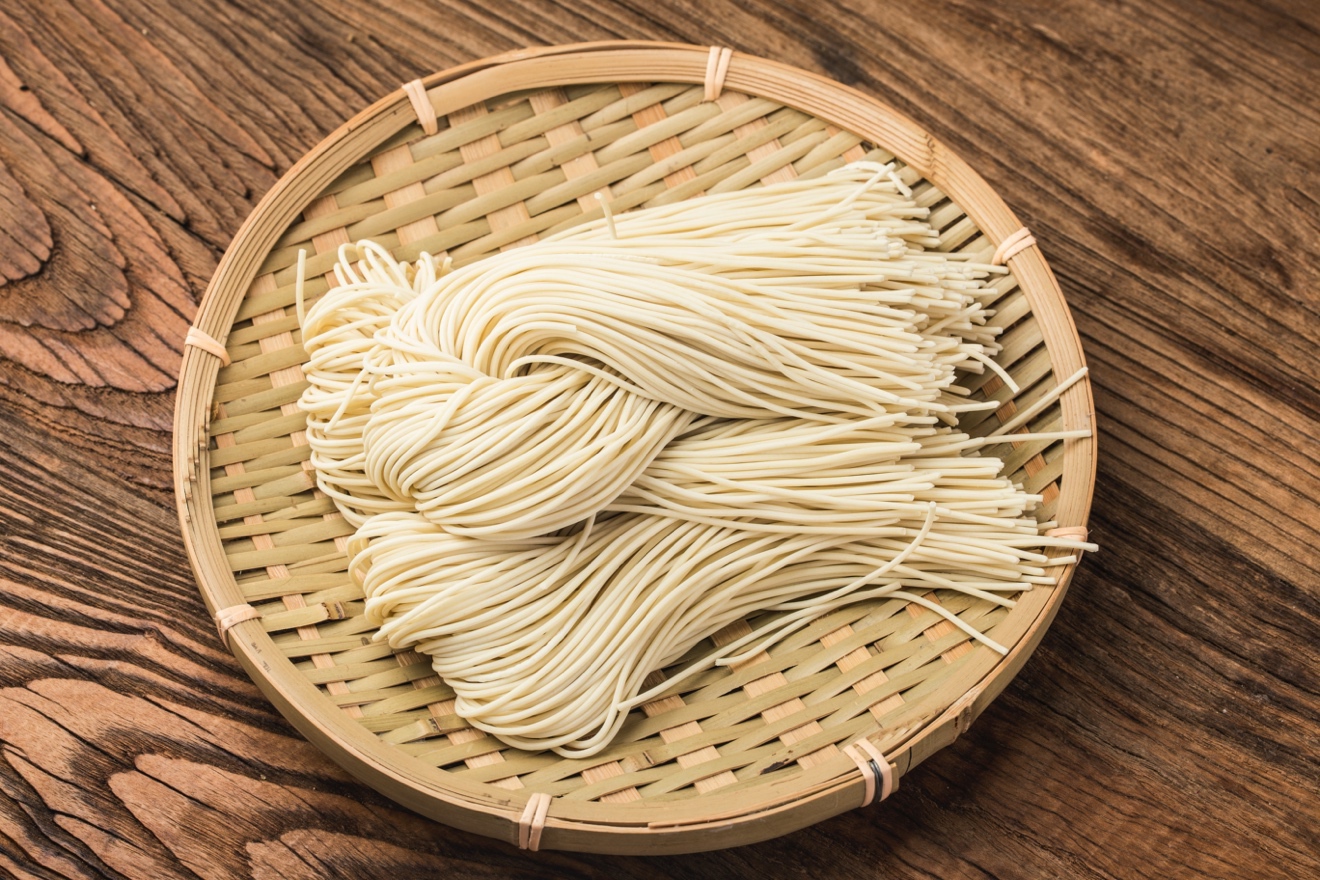The Book of Ramen
Japanese Noodles Soup in Classic and Not-you-Usual Ways
By: Tyler Sweet
2022 Tyler Sweet, All Rights Reserved.
License Page
This book or any of its content may not be replicated by any means. Copying, publishing, distributing the contents of this publication without the explicit permission of the author is an infringement of the country's copyright law and will leave you liable to litigation. The contents of this book are well researched and fact-checked before printing to ensure that the readers get the best value. The author is not liable or responsible for the wrongful use of the information provided in the contents of this book.
Special Gift
You deserve something special. I come bearing gifts for all our loyal readers, a surprise package wrapped just for you to show how much I appreciate all you've done. There is a special offer for you and just you alone, you've more than just earned it, you're worth it, and that's why I will send you a notification on the latest offers, giveaways, discounts on other books that I'm sure you will fall in love with. If you're interested, please kindly fill in the subscription box below and we will get in touch with you.
https://sweet.subscribemenow.com
Table of Contents
Introduction
Ramen is probably one of the most popular noodle soups known worldwide. And Japan is the proud source of classic recipes. Ramen noodles, however, can be traced to Chinese cuisine and have been used in many other different recipes. This ramen cookbook features the classic noodle dish with varying toppings and soup base flavors. It also includes not-your-usual ramen recipes that are worth the effort all the same. Check out our take on ramen in this dedicated cookbook, starting with this listing:
The Classics
Shoyu Ramen
Chicken Ramen
Tonkotsu Ramen
Pork Ramen
Vegetarian Ramen
Beef Ramen
Miso Ramen
Chashu Ramen
Turkey Ramen
Thai Chicken Ramen
Bacon and Egg Ramen
Mushroom Ramen
Spicy Red Miso Ramen
Creamy Chicken Ramen
Kimchi Ramen
Spiced Tofu Ramen
Not-your-usual Ramen Recipes
Beef Ramen Stir Fry
Crunchy Ramen Sandwich
Ramen Coleslaw
Cold Ramen Salad
Grilled Chicken Ramen Skillet
Ramen Carbonara
Mongolian Beef Ramen
Sweet and Spicy Meatballs Ramen
Creamy Cheddar Broccoli Ramen
Instant Ramen Snack Mix
Ramen Pad Thai
Crispy Ramen Stir Fry
Cheesy Kimchi Ramen
Ramen Burritos
Ramen is a bowl of happiness, no doubt. We are sure you cannot wait to start making the recipes in this cookbook, ranging from the classics to the innovative ones. But first, lets start with a little ramen tutorial to introduce you to the elements before you proceed with making the recipes one by one.
The Basic Elements of a Hearty Ramen
You do not have to be a kitchen expert to know what goes into a bowl of ramen. You see it with your eyes: the noodles, the soup, the toppings, and garnishes. For foodies, it may just be about some noodles and a soup. But look closely, and you will see that it is more than that.
Here are the elements of a ramen dish that may have escaped your sight:
The Noodles
As mentioned earlier, ramen noodles are inspired by Chinese cuisine, but through the years, Japanese cooks were able to produce a kind they can proudly call their ownthe Chuka-men. These noodles are made of wheat and sold dried or fresh. They have that chewy texture thats firm to the bite. Since ramen noodles are primarily submerged in hot soup, they should hold their ground and not absorb too much liquid and become too soft.
The Broth
The second most important aspect of ramen is the soup. Originally, ramen soups are classified into three, depending on their seasoning base: the shoyu (soy sauce), shio (salt), and miso (soybean paste). From there, you derive the broth from either seafood, pork, chicken, or other meats. As a home cook, you may liberally experiment on your soup base, depending on your familys preference and the available ingredients in your pantry. You may mix and match to create a combination of flavors that will suit your palate and please your diners best.
An essential key to a deeply nourishing and comforting broth is time. You must invest a good amount of time to create a version thats close to what the best ramen restaurants can ably produce. Although its difficult to copy theirs to the nines, you can always make a homemade version that is good enough. And those are the likes featured in this book.
Creating a ramen soup from scratch could be an all-day affair. But basically, the idea is to simmer either chicken carcass, pork bones, or both in water flavored with some Japanese dashi stock and seasoning mentioned above. Since the broth is your dishs secret weapon, you can make it any way you like with unique features to help separate your recipe from the rest. For now, however, it would be wise to follow our recipes and take after our tried and tested combinations for enriching and generally delicious soup stock.
The Toppings and Garnishes
You may feel accomplished once you get the best noodles and soup combination. But wait until you get to this part of finishing off your ramen with toppings and garnishes. Some ramen usually have only one of these toppings, but others keep theirs loaded with some or most. Make your standard bowl of happiness uniquely delightful with the help of these choices:
Chashu sliced pork thats been braised or roasted is probably the number one choice for ramen lovers. You can see this added to a lot of bowls to make them more appetizing and satisfying.
Tamago eggs are another common sight in most ramen recipes. They may either be served raw, marinated, soft-boiled, or hard-boiled.
Kamaboko steamed fish cake slices are another favorite ramen topping for most, especially those who like theirs without much meat.
Moyashi bean sprouts add a bit of crunch and texture to a ramen bowl. They may be added blanched or raw, allowing the hot soup to cook them a little so they maintain their natural sweetness and crunch.







